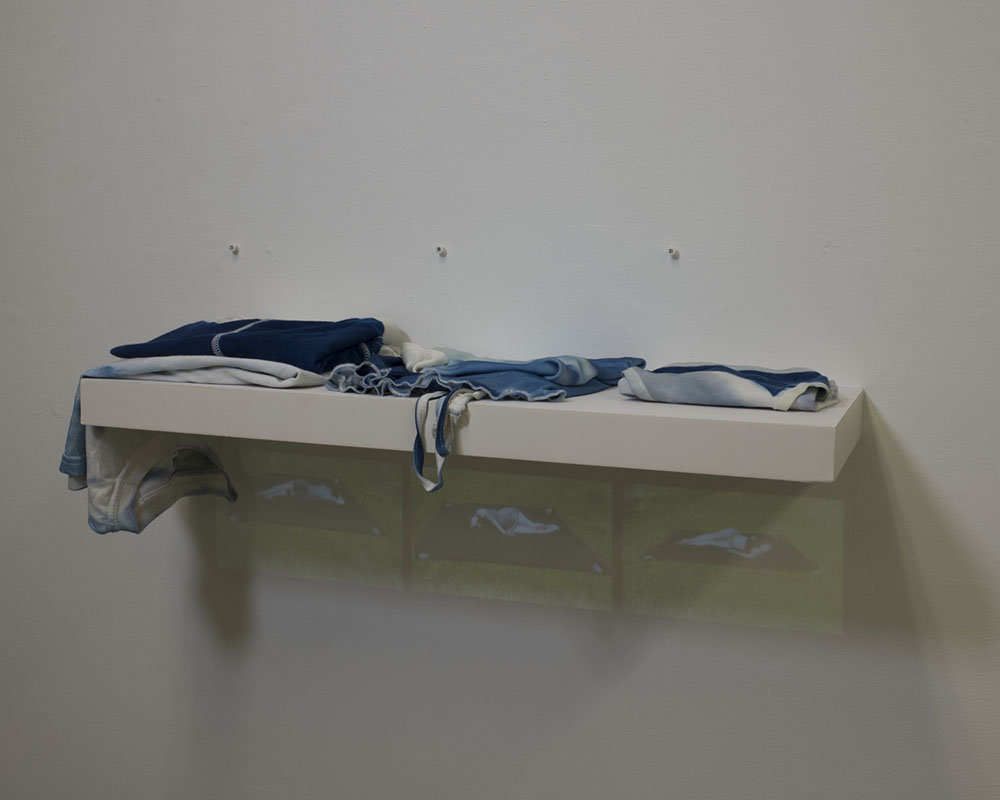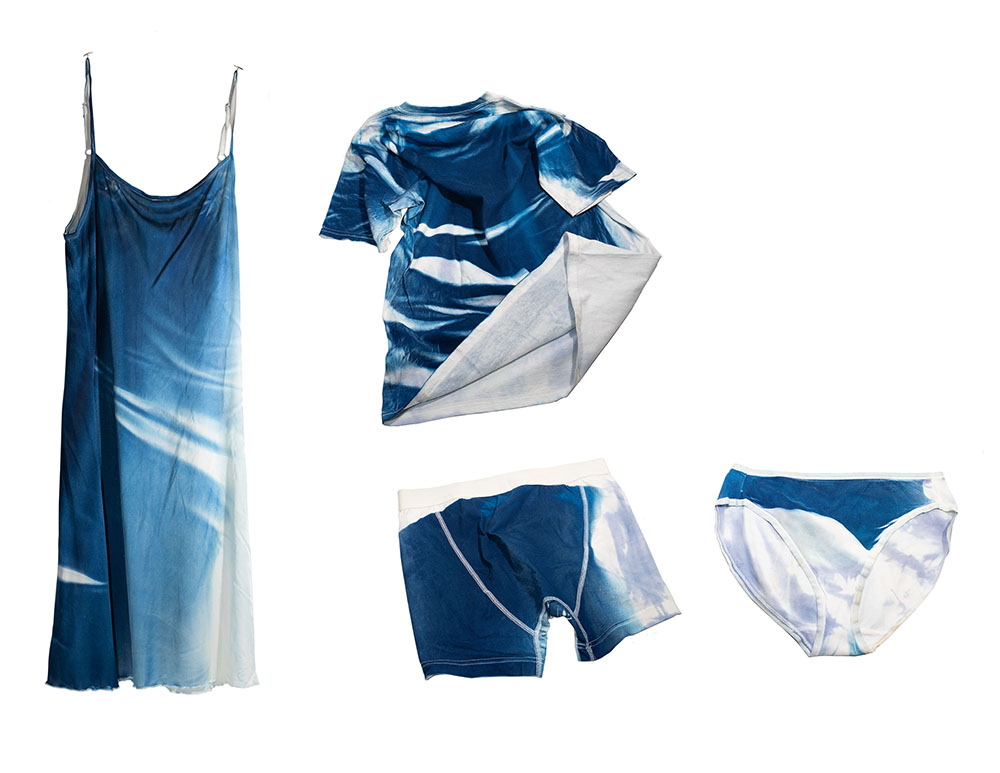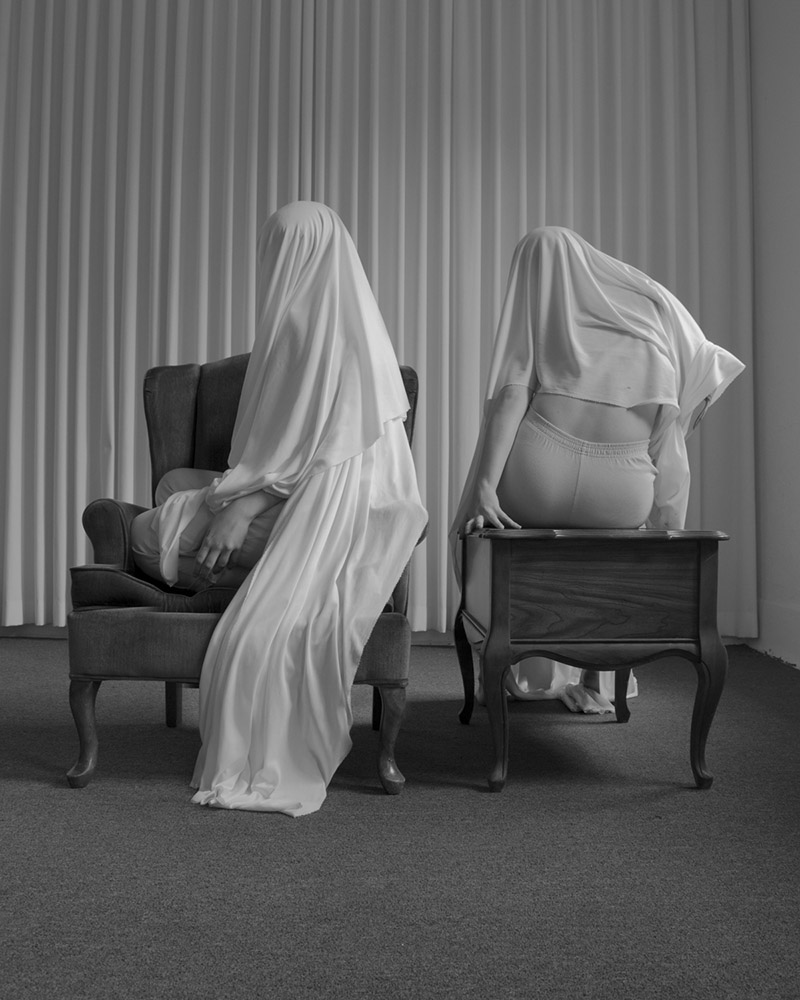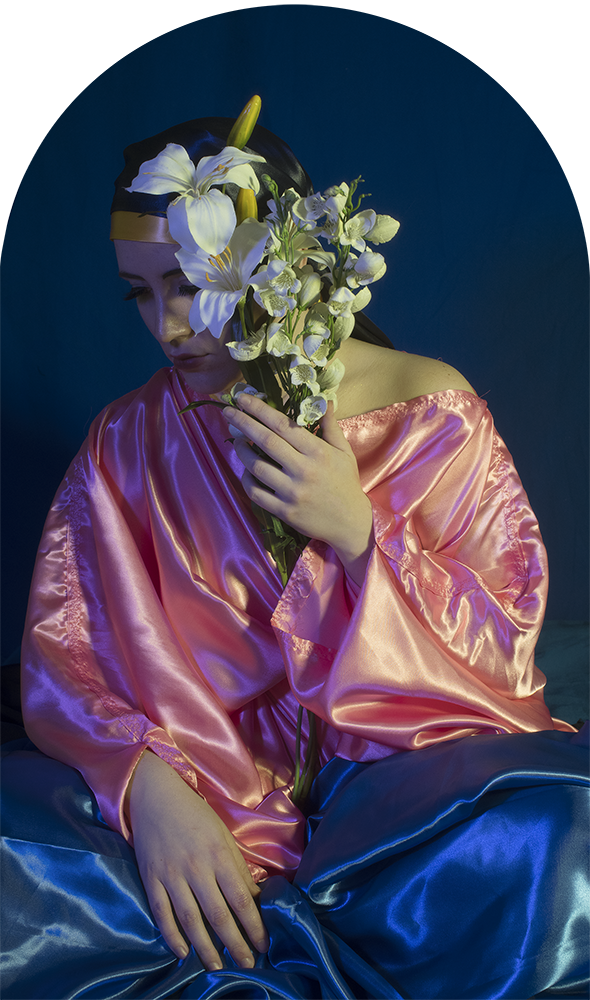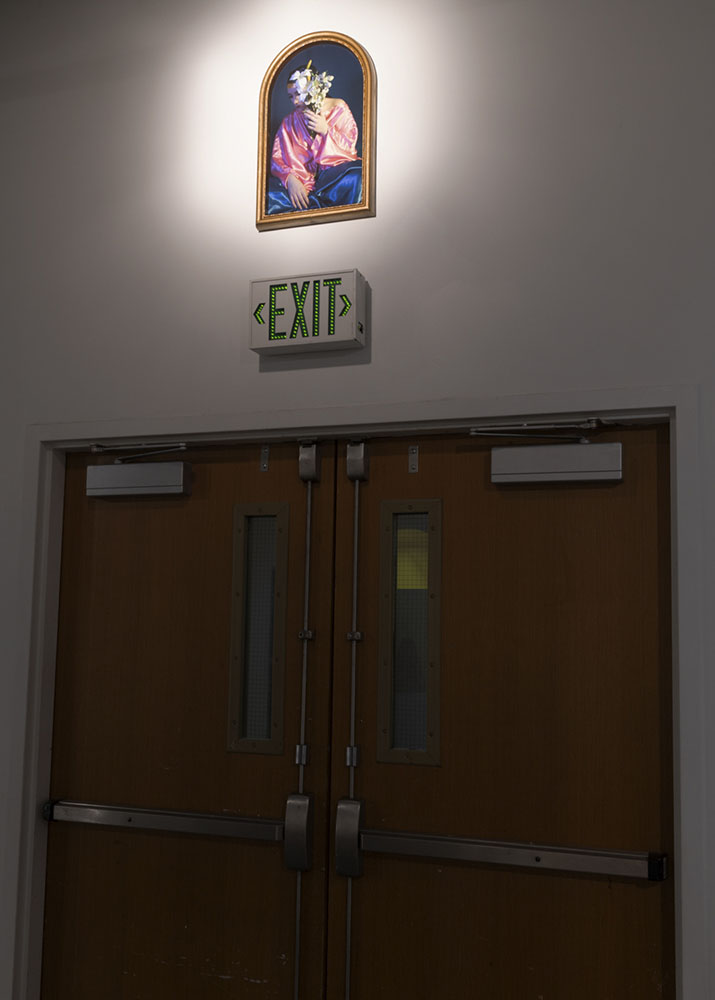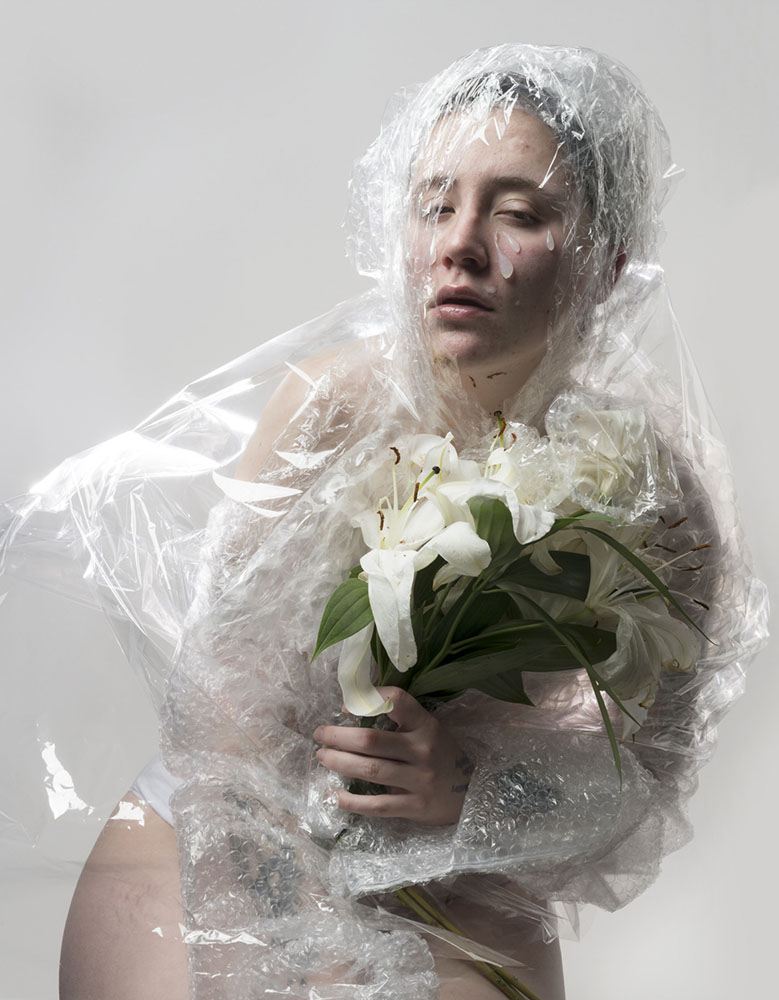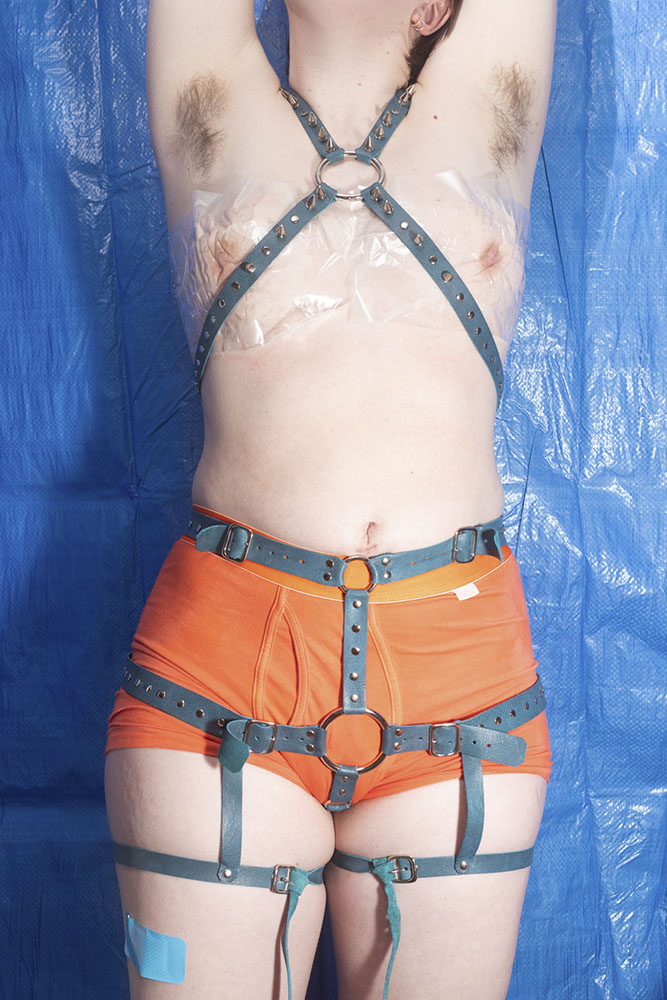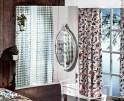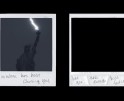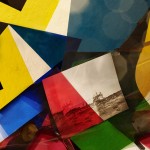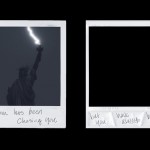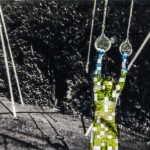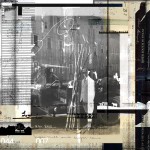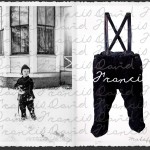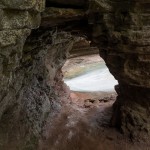Focus on Appropriation: Hyacinth Schukis
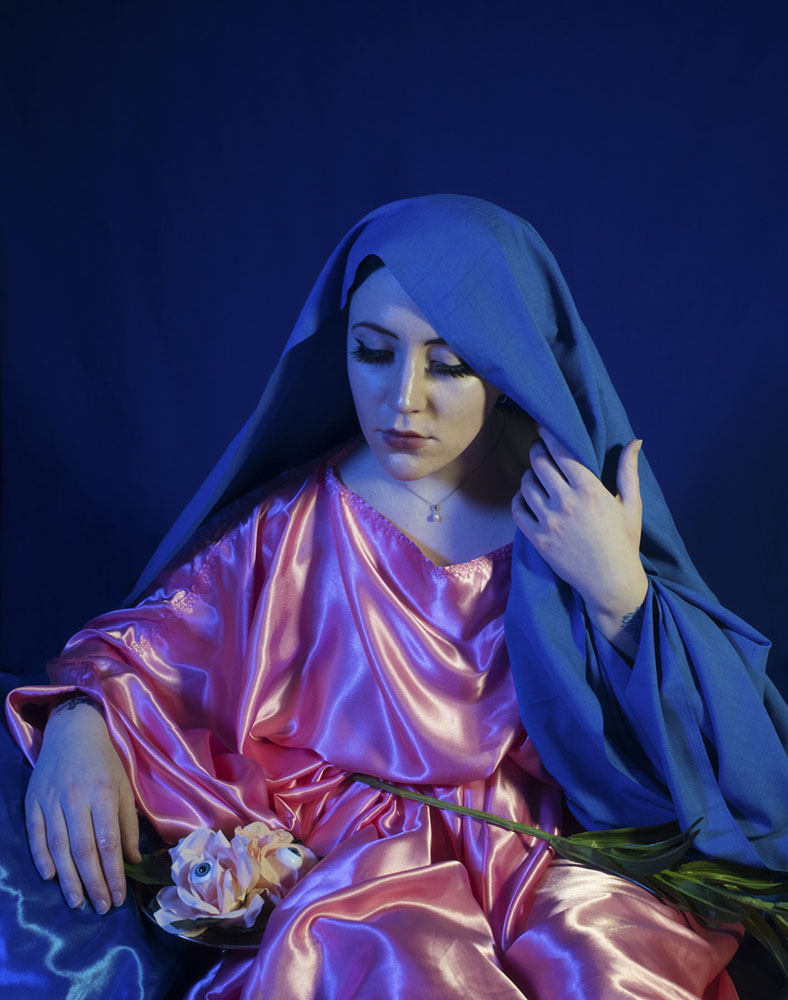
© Hyacinth Schukis 2020, Santa Lucia (After Palma and del Cossa). Afterlives is a series of large-scale photographic reenactments in self-portraiture made whilst coming out as queer and transgender. The photographs combine imagery from Roman Catholic painting and sculpture with imagery from ACT-UP, Cruising Utopia, and traditions in queer art and activism.
Hyancinth Schukis‘ artworks are unique in their appropriation. Rather than using an existing image and placing it into a new context, they take up the visual language of classical religious paintings and breathe new life into the style. By co-opting this particular visual vocabulary, Schukis suggests important questions of representation and cultural relevance. Who is revered in these traditional images – and who remains unseen? What qualities from these classical paintings do we still consider more worthy of being celebrated? By using self portraiture, Schukis positions themselves as both muse and creator, inviting the viewers to imagine a history where marginalized bodies are also considered holy.
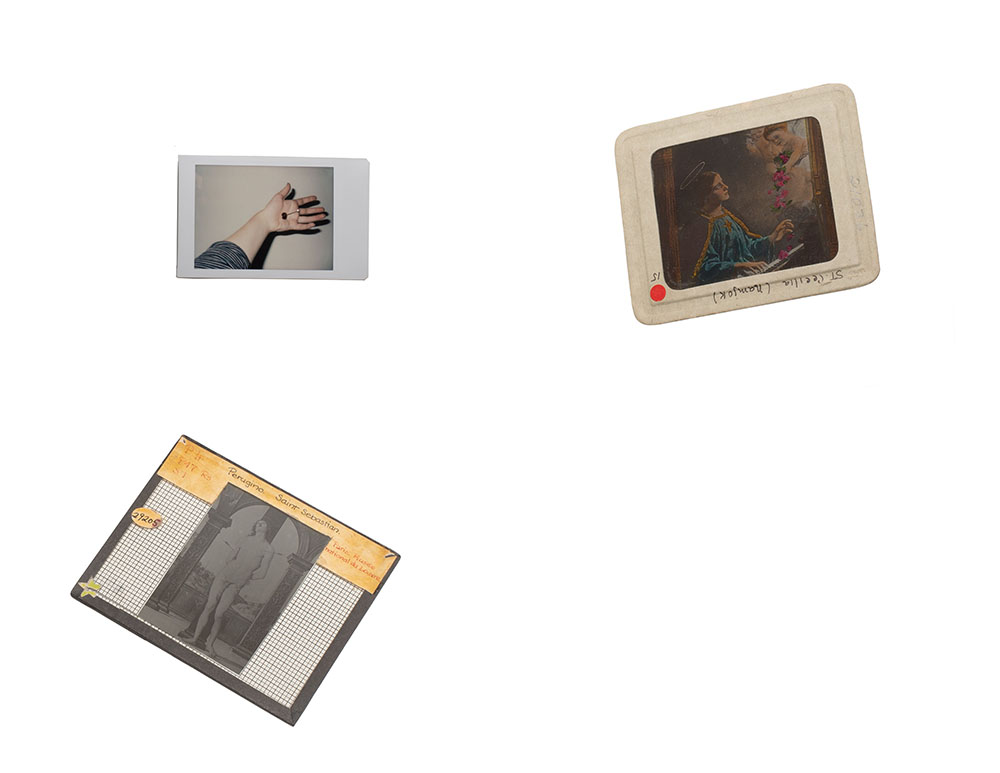
© Hyacinth Schukis 2019. Counter-clockwise from top right: Saint Cecilia; Stigmata; Saint Sebastian.
Hyacinth Schukis is an artist and academic. They are currently based in Portland, Oregon. Hyacinth holds bachelor’s degrees in Art and Art History from the University of Oregon. Their work has been included in a number of publications, including: Pilot Press’ A Queer Anthology of Healing, Cumulus Photo and Fifth Wheel Press’ Moonsoaked, Soft Lightning’s Connection, and others. Their work has been shown nationally, and online with platforms including In the In-Between, Humble Art Foundation, and From Here on Out. They were an artist in residence at Yale Norfolk. They are currently an MFA candidate at Image Text Ithaca, a low-residency program based in Ithaca, New York.
I am an artist working with, and about photography. I illustrate cracks in the patinas of art history and classicism, performing from the place of my body. Much of this work is made in the structure of self-portraiture, but I do not title it as such, or exclusively photograph my body. My practice’s current conceptual base is the repeated act of re-imagining, first women’s and now queer images, particularly those which are fraught or effaced in the “Western” art historical or media record, narratives that have some stake in my own identity or representation. I make these self-portraits as a chronically ill genderqueer person, and consider my work identity-based.
To produce work, I first conduct research both as art historian and artist about a given figure’s image and the life behind it, and then make pictures and “relics,” usually for gallery exhibition, in which I hope to offer the figure in question new visual agency. I use my body as a conduit for retrieving lost or misrepresented narrative in photographs, in order to lend “self-images” to historical subjects, although my subjects often do reflect my ongoing explorations of selfhood and its mutable formations. In the face of existing binaries, the agency I seek in these re-imaginings may look ambivalent or indefinite. I have an old-school photographic desire to retain the language of the painting studio, and, in that logic my work is tied to slower time, my body, and the physical. I use this slowness to both skirt and carefully consider the photograph’s ties to truth-telling and violence. Often, I consider ways in which my work obscures referenced originals in service of powering a new narrative, as many neoclassicisms do, sometimes to sinister ends. I don’t always find photographic equipment or even photographs necessary to operate, but, see photography’s ontology as something that furthers my work’s potential to resurrect and make real narratives that have been distorted by past record-keeping.
Kat Davis: How are you affected by the images you see in your day-to-day?
Hyacinth Schukis: I witness an overwhelming flood of images in an average day as an intended consequence of being an active participant on social media (which is so much the professional space of the visual artist these days), and I respond in a few ways. First, I collect images that speak to ideas I might be thinking about—right now that includes the use of cake as medium, queer vessels, and queer neoclassicism. And, then, in the studio, I make very few images. I have never been a very prolific artist, but in recent years, I’ve slowed down to an intense degree, mulling over and revisiting for months one image or figure that is important to me. I try to keep my walls pretty clean, but they often become grids of pictures that mimic my online existence and organization.
KD: What is your relationship to photography? How did you land on this way of pursuing art?
HS: Photography has been rather ubiquitous in my life. With many thanks to my parents’ love of picture-making, I suppose my training started in the darkroom at age 10. I also studied painting in high school and college, but I remain most committed to photography because of its complicated relationship to things like facts, truth telling, evidence, and so on. I also love photography when it is physical. I am disturbed daily by how photography has been weaponized, though, so, I photograph myself more than anything else, and think all the time about the distinction between “making” and “taking.” I am flippant in my use of other media, and am interested also in making props, backdrops, garments, writing, collections, artifacts, and so on.
KD: As you’ve shown in your work, you make use of ambiguity or ambivalence. You take on the Catholic Church’s fixation with binaries – good and evil, heaven and hell. Your premise is that reality is not so black and white, and maybe the idea of “Catholic Guilt” shows that imposing these strict binaries on humans creates insurmountable conflict. Do you see your work as an answer to the fear around not fitting into neat definitions?
HS: More than taking on those kinds of big questions directly, I tend to gravitate toward depicting figures in which ambivalence or nuance is already present, sometimes even venerated. These are the figures often most applicable to my personal narrative, useful for depicting portions of queerness I experience but might not be ready to depict in a “straight” manner. Narratives of queer martyrdom in particular have always been both troubling and appealing. Reenacting such images often results in more ambivalence. I wasn’t raised Catholic or even Christian, but was exposed to these images at very early points in my artistic training and taught to see them as the height of beauty and aesthetic success. I’m not sure my work is an “answer,” so much as an embodiment of my own questions toward the tradition’s “staying power” and aesthetic stickiness. There is visual power in such images, but there is also danger. I am exploring how my white, queer, chronically ill body both succeeds and fails in taking such images on, their constructions, and how my representation might do hegemonic western traditions offense. I worry my image will still be eaten up or weaponized by a tradition because of this. Even the marginal figures are tied to the history of Catholicism, and so, conquest, colonialism, and capitalism. So, such depictions have a relationship with both assimilation and queer survival.
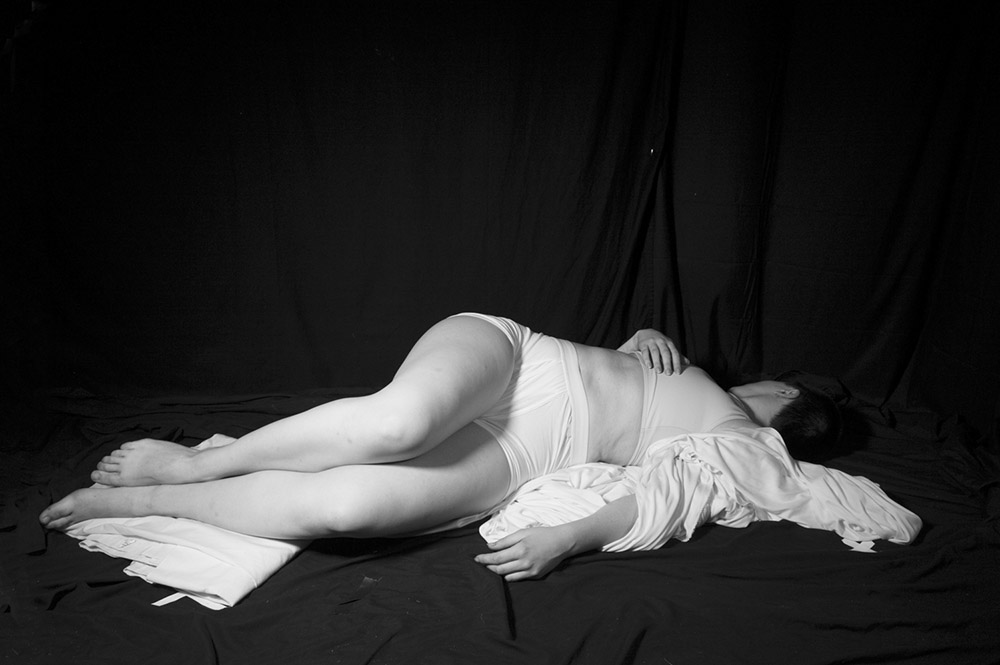
© Hyacinth Schukis 2019. Self portrait as Giuseppe Giorgetti’s recumbent marble sculpture of Saint Sebastian for the Roman church San Sebastiano Fuori le Mura (Saint Sebastian Outside the Walls) d. 1671-72.
KD: What does the appropriation of the classical visual language allow you to communicate about nonbinary identities that you wouldn’t be able to with modern imagery?
HS: Marginal figures in older traditions lumped into the oft-weaponized “classical” such as the Roman Catholic one or the ancient Greek one are a kind of “proof” that I have predecessors as a queer and trans person. My interest in lineage and oldness have a lot to do with both trauma and feeling a loss of immediate queer ancestry, particularly living in the continued reaches of the AIDS crisis. Some images, like that of Saint Sebastian, are incredibly important to a longer history of queer art that I am exploring my alignment with. The proof of roots within dominant culture is taken up frequently in pre-Stonewall queer art. Using photography, I’m of course doubling down on the idea of proof, and so I leave traces of construction in my images (tape, pins, jagged edges of fabric). My bodies of works’ reference points in large part come out of personal interest and trouble, though. I don’t think these topics are unapproachable in contemporary imagery (which I hope my own work exists as).
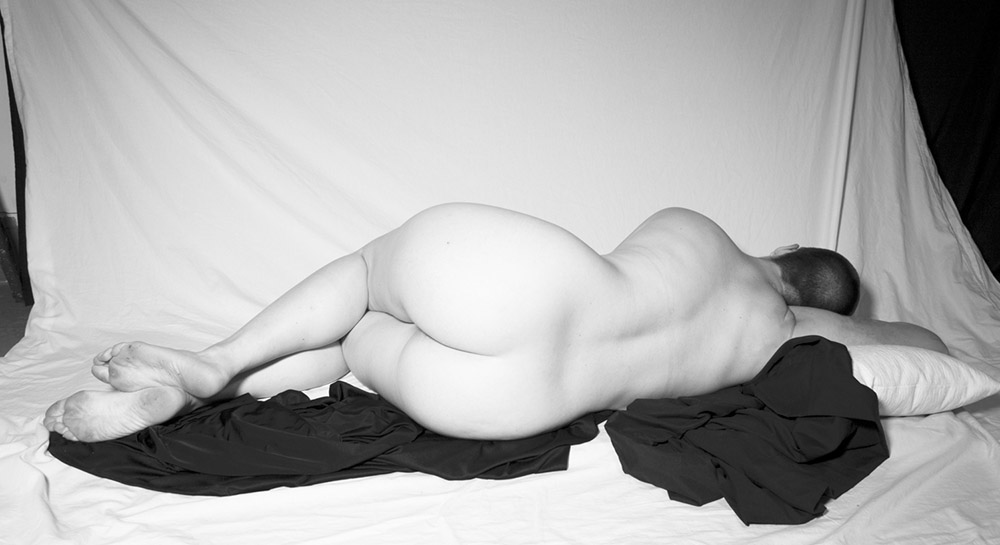
© Hyacinth Schukis 2019. Self portrait as the Sleeping Hermaphrodite sculpture copies by an unknown artist in Rome’s Palazzo Massimo, and Paris’ Louvre (with 1620 augment by Gian Lorenzo Bernini), d. 1st-2nd c. C.E.
KD: These religious binaries often have one side dominating the other. Salvation conquers sin, God defeats Satan. If the truth isn’t black-and-white, if liberation exists within an ignored spectrum or transcendence of this spectrum, how would you more accurately characterize what Christiandom would consider the “victory” of one side over the other?
HS: I hope that a future of true solidarity between marginalized persons in the struggle for “existing otherwise” (a la Claude Cahun and Saidiya Hartman) is less concerned with the concept of “victory,” winning, and so on. I’ve learned a lot from studying the work of Black trans artists and theorists (I am particularly grateful to Tourmaline’s work), and from being around activist friends, and my partner’s studies in making games about the beauty of tossing such notions aside in favor of practicing mutual aid, multiplicity, collaboration, and abundance. I think there is a gap between my developing politics and my work. I have asked myself frequently when making work how I might demystify the things I am reenacting and also celebrate the rejected parts of myself, and my solution in the bodies of work using the Catholic canon was to hold it all up for inspection, and to make paths to the “originals” available in selected titles. The next step for the “canon” in my work might be rejection.
KD: You question the very truthfulness of the narratives shown in classical art. By taking the symbols of the art and reconfiguring them, you seek to find new truth, even in this added layer of artifice. If the truth is better revealed in the imaginary, what does this say to you about Truth itself, and what value is there to be found in this Truth?
HS: More relevant to my practice than the quest for a singular truth are the practices of seeing again and seeing differently. When I studied in Rome in my undergraduate, I was so excited to learn about historically “disproven” faith objects that were worshipped anyways, such as the body of Saint Cecilia (which disappeared in the medieval period and reappeared miraculously just before the Jubilee of 1600), who has since become a recurrent figure in my work. I don’t expect my work to hold fundamental truth, I certainly don’t want it to impose one, and I hope it pushes at such a conception. I have learned speculation as one answer to gaps in the archive (Saidiya Hartman again) and as a way to think creatively about art and climate change, and while this is tangential to the imaginary I don’t think it’s irrelevant. I think the imaginary is an invaluable mode of future making.
Follow Schukis on Instagram at @discoursamoreux
Posts on Lenscratch may not be reproduced without the permission of the Lenscratch staff and the photographer.
Recommended
-
Photography Educator: Juan OrrantiaDecember 19th, 2025
-
Bill Armstrong: All A Blur: Photographs from the Infinity SeriesNovember 17th, 2025
-
Rebecca Sexton Larson: The PorchApril 28th, 2025
-
Matthew Cronin: DwellingApril 9th, 2025
-
Melissa Grace Kreider: i will bite the hand that feedsSeptember 25th, 2024

